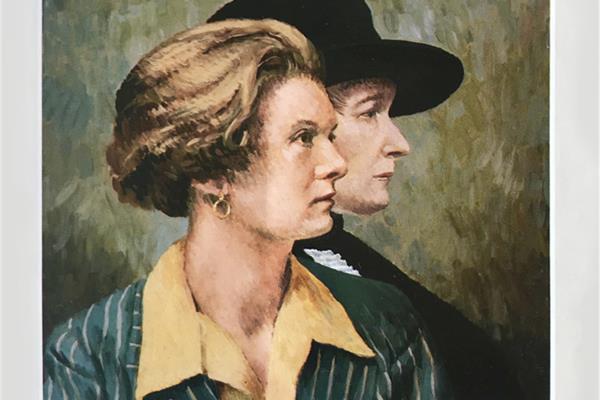Lamb House played host to a very special event on Wednesday September 18 2019 as part of this year’s Rye Arts Festival.
The occasion saw the opening up of a new room on the first floor of the National Trust property for the first of two sold-out talks by Dr Richard Ormrod. The subject of the talk was the life and loves of the “lesbian icons” Radclyffe ‘John’ Hall and Una, Lady Troubridge, who were residents of Rye in the 1930s.
“Of all the weird and wonderful characters who ever lived in Rye, Radclyffe Hall and Una, Lady Troubridge were amongst the most fascinating and impressive.” Dr Ormrod said in opening the talk. “They were at once traditional and radical; bohemian and respectable; and most of all, perhaps, morally courageous in living their lives as they saw fit, despite the prejudices of pre-war society.”
The couple first met in 1915 and were inseparable for the next 28 years. Both were artistic: Una a sculptor of Nijinsky and the first translator of Colette; Radclyffe Hall a famous, and after the trial of her book The Well of Loneliness, an infamous, novelist. They loved Rye, escaping to it after the trials of The Well in 1928, living in various houses, most notably their “beloved Forecastle” in Hucksteps Row, until 1940.
Radclyffe Hall published the first of her eight novels in 1924 but it was the publication of The Well of Loneliness in 1928 that sealed her reputation. The novel, with its overt lesbian theme deals with the life of Stephen Gordon, a masculine lesbian who identifies as an “invert”. The novel was not sexually explicit but just the hint of lesbian love led to an obscenity trial and a ban in the UK. Following the trial all existing copies of The Well of Loneliness were destroyed. The novel was finally published in the UK in 1949 but by then Radclyffe Hall had died of colon cancer.
Radclyffe Hall used Rye as the setting for her last novel The Sixth Beatitude, which was published in 1936. The novel was also set in Hucksteps Row, the small alley off Church Square and renamed Croft Lane in the novel.
The Sixth Beatitude is an unflinching depiction of the poverty and deprivation that existed in Rye between the wars. The story revolves around the Bullen family and Hannah Bullen’s attempts to put food on the table and heat the semi-derelict house.
The Sixth Beatitude also catalogues the early attempts at pre-second-world-war slum clearance in Rye with the removal from Hucksters Row of the ‘the crazy old houses with their rotting walls, their cracked weather tiles and their sagging roofs . . . unable any more to withstand the winters’.
The couple moved from Rye in 1940 but left behind a memento in the form of the large cross of a clothed Jesus hanging within the St Anthony of Padua Church on Watchbell Street. The couple had briefly lived opposite the church and they, as Roman Catholic converts, wanted to contribute towards the building of the new church. The cross remains in place to this day and St Anthony of Padua is open every day – though you will need to go to Rye library to pick up a copy of one of Radcliffe Hall’s novels.
Image Credits: Rye Arts Festival .



